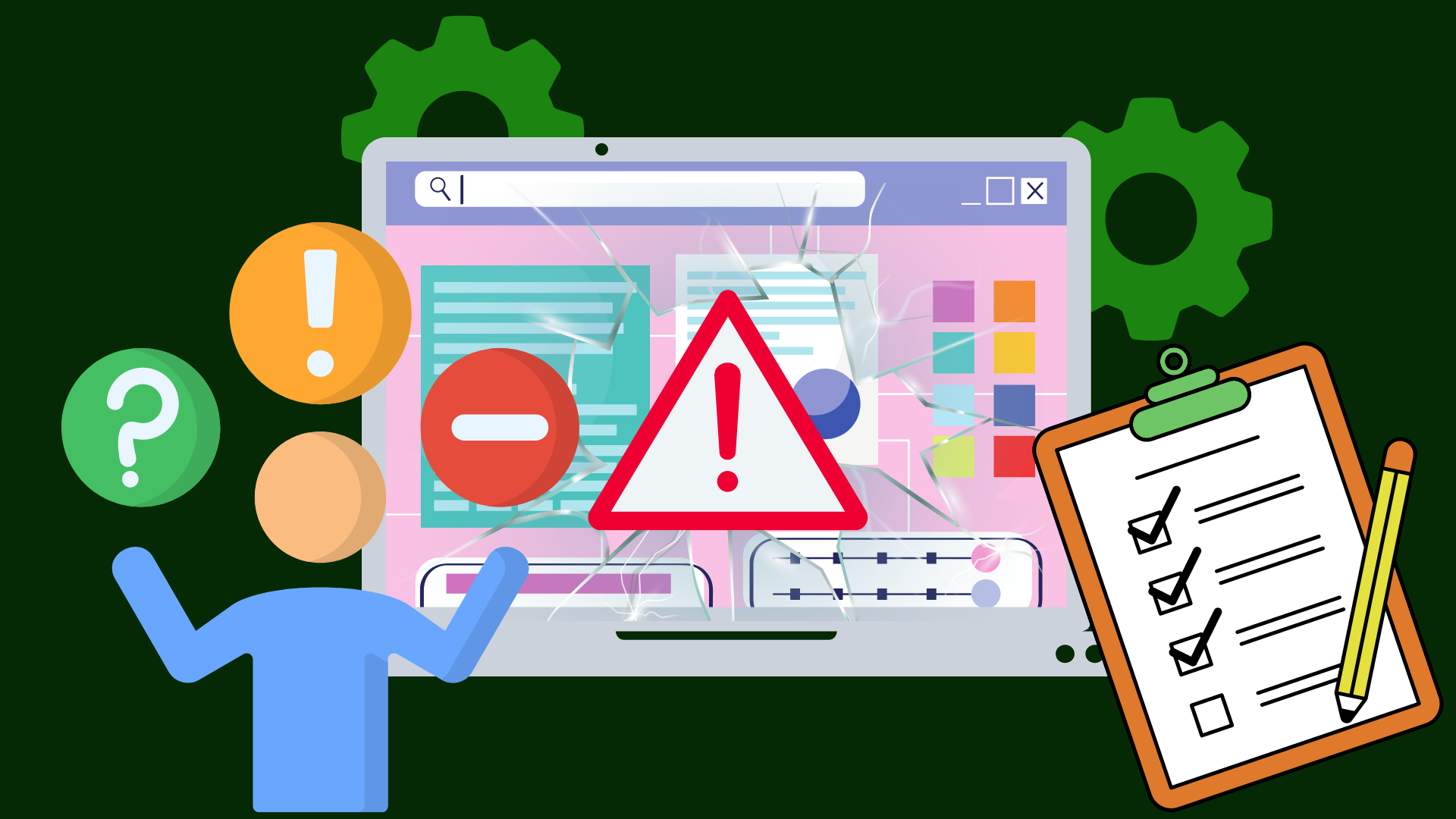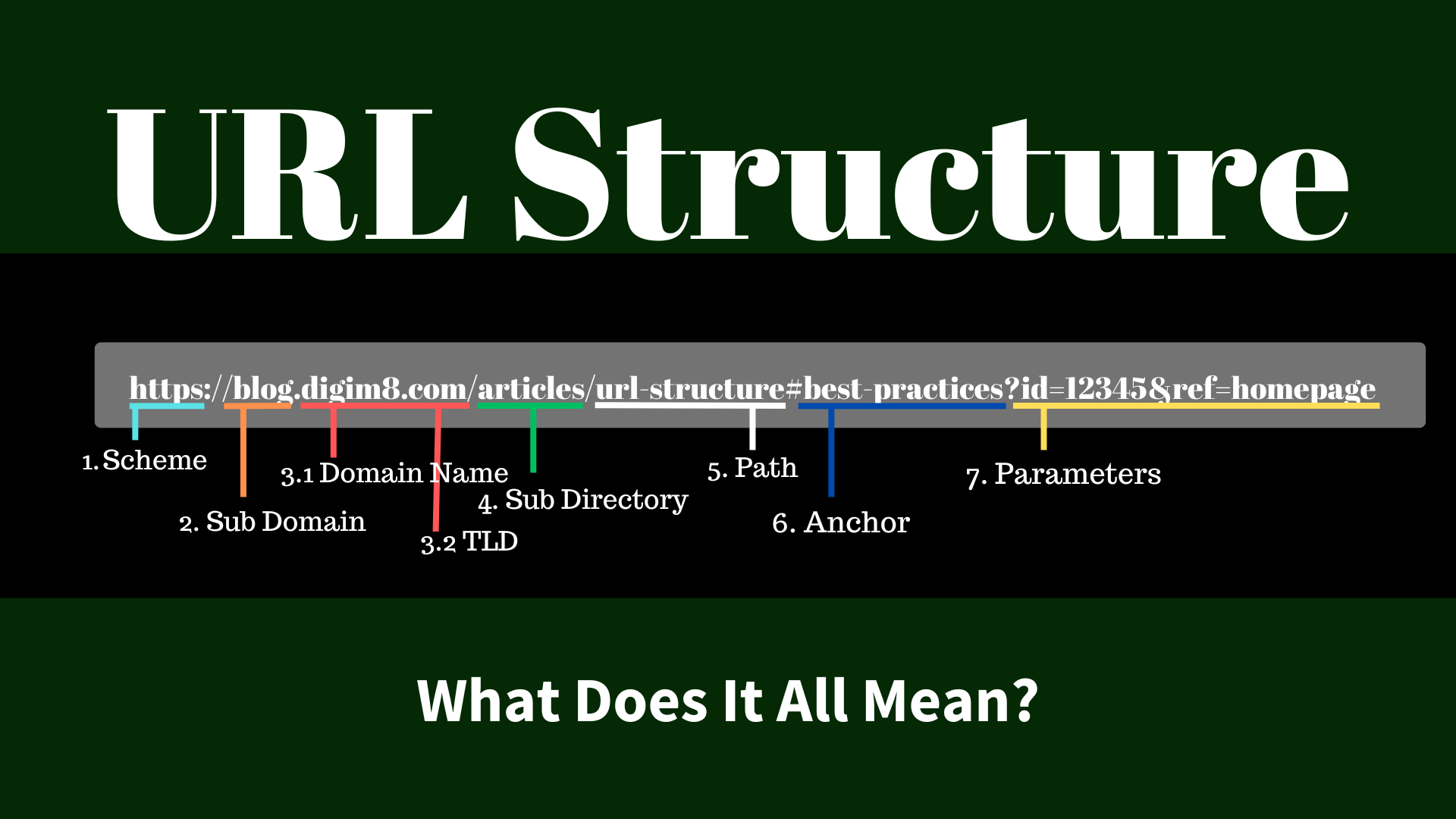Optimizing your website has become more crucial than ever. Gone are the days when a few well-placed keywords could propel your site to the top of search engine results.
Today, search engines employ sophisticated algorithms that consider a myriad of factors, from site speed and mobile friendliness to user engagement and content relevance. This dynamic environment necessitates regular, thorough SEO audits to ensure your website stays competitive and compliant with the latest best practices.
Over the years, the scope of not only SEO marketing but also website audits has expanded significantly. Initially, these audits focused primarily on keyword optimization and backlink quality. However, modern SEO audits encompass a wide range of elements, including technical SEO, on-page and off-page factors, content quality, and user experience.
By conducting a complete SEO audit, you can identify areas for improvement, rectify potential issues, and implement strategies that enhance your site’s performance, usability, and search engine rankings.
Whether you’re a seasoned webmaster or a novice site owner, understanding the intricacies of SEO audits is essential for maintaining a robust online presence.
What Is An SEO Audit?
An SEO audit is a comprehensive evaluation of a website designed to assess its performance in search engine results and identify opportunities for improvement. It involves analyzing various aspects of the site, including technical configurations, on-page elements, off-page factors, and overall user experience.
The primary goal of an SEO audit is to uncover any issues that may be hindering the site’s ability to rank well in search engines and to develop actionable recommendations for optimizing its performance.
The process begins with a technical audit, which examines the website’s infrastructure, such as its site speed, mobile responsiveness, and crawlability. This is followed by an on-page analysis, where elements like meta tags, headers, content quality, and keyword usage are scrutinized. Off-page factors, including backlink quality and social signals, are also evaluated.
Finally, user experience aspects, such as site navigation, layout, and engagement metrics, are assessed to ensure the site provides value and a seamless experience to its visitors. By addressing the findings of an SEO audit, website owners can enhance their site’s visibility, attract more organic traffic, and ultimately achieve better search engine rankings.
Why Are SEO Audits Important?
SEO audits are essential for maintaining and improving the health and performance of a website. Here are several key reasons why they are crucial:
- Identify Issues: SEO audits help uncover technical and content-related issues that may be affecting your site’s performance. These can include broken links, slow loading times, or improper use of keywords. By identifying these issues, you can address them promptly and prevent them from negatively impacting your site’s search engine rankings.
- Improve User Experience: A well-conducted SEO audit not only focuses on search engine requirements but also enhances the user experience. By optimizing site speed, ensuring mobile-friendliness, and improving navigation, you provide visitors with a more enjoyable and efficient browsing experience, which can lead to higher engagement and conversions.
- Stay Updated with Algorithm Changes: Search engines frequently update their algorithms to deliver better search results to users. An SEO audit ensures that your website stays compliant with the latest updates and best practices. This adaptability is crucial for maintaining and improving your site’s ranking over time.
- Enhance Content Quality: SEO audits evaluate the quality and relevance of your site’s content. By identifying outdated or underperforming content, you can update or remove it, ensuring that your site remains authoritative and valuable to your audience. High-quality content is a key factor in achieving and sustaining good search engine rankings.
- Competitive Advantage: Regular SEO audits help you stay ahead of your competitors by continuously improving your site’s performance. By identifying new opportunities for optimization and addressing any weaknesses, you can ensure your site remains competitive in search engine results, attracting more organic traffic.
Types Of SEO Audits For Websites
Conducting website audits is essential for ensuring that a website remains competitive, functional, and optimized for search engines. SEO audits come in various forms, each focusing on different aspects of a website. Here, we explore the primary types of SEO audits and their significance in maintaining and improving a website’s performance.
1. Technical SEO Audit
Purpose: A technical SEO audit examines the foundational elements of a website that affect its ability to be crawled and indexed by search engines. The goal is to identify technical issues that might hinder search engine bots from properly accessing and understanding the website’s content.
Key Elements:
- Crawlability: Ensures that search engine bots can access all pages. Tools like Google Search Console can help identify crawl errors.
- Indexability: Checks if the site’s pages are indexed by search engines. It involves examining robots.txt files and meta tags like “noindex”.
- Site Architecture: Reviews the structure of the website to ensure a logical flow and proper linking hierarchy.
- Sitemap: Evaluates the XML sitemap for accuracy and submission to search engines.
- Page Speed: Analyzes load times using tools like Google PageSpeed Insights, as faster pages are favored by search engines.
- Mobile Friendliness: Assesses the site’s performance on mobile devices, which is crucial given the mobile-first indexing by Google.
- HTTPS Status: Ensures the website uses secure HTTPS protocol instead of HTTP.
Importance: A technical SEO audit helps in identifying and fixing underlying issues that can significantly impact the site’s visibility and ranking. It ensures that the website meets technical standards set by search engines, thereby facilitating better indexing and ranking.
2. On-Page SEO Audit
Purpose: An on-page SEO audit focuses on optimizing individual web pages to improve their search engine rankings and attract more organic traffic. This type of audit looks at the content and HTML source code of a page.
Key Elements:
- Content Quality: Evaluates the relevance, depth, and uniqueness of the content. Content should be informative, well-structured, and free of plagiarism.
- Keyword Optimization: Assesses the strategic use of primary and secondary keywords throughout the content, titles, headings, and meta descriptions.
- Meta Tags: Reviews the title tags, meta descriptions, and header tags (H1, H2, H3) to ensure they are optimized and relevant.
- URL Structure: Checks that URLs are clean, descriptive, and include target keywords.
- Internal Linking: Ensures that the page includes appropriate internal links to other relevant pages on the site, helping to distribute link equity and improve navigation.
- Image Optimization: Reviews the use of images, including alt text, file names, and sizes, to enhance loading speed and accessibility.
Importance: An on-page SEO audit is crucial for ensuring that each page of the website is fully optimized to target specific keywords and deliver a high-quality user experience. This can lead to better rankings and increased organic traffic.
3. Off-Page SEO Audit
Purpose: An off-page SEO audit focuses on the factors outside of the website that can influence its search engine rankings. This primarily involves backlinks, social signals, and overall online reputation.
Key Elements:
- Backlink Profile: Evaluates the quantity and quality of backlinks pointing to the website. Tools like Ahrefs and Moz can help analyze the backlink profile.
- Anchor Text Distribution: Reviews the anchor texts used in backlinks to ensure a natural and diverse profile.
- Link Toxicity: Identifies potentially harmful or spammy links that could negatively impact the website’s ranking.
- Social Signals: Assesses the website’s presence and engagement on social media platforms, which can indirectly influence SEO.
- Brand Mentions: Checks for mentions of the brand across the web, even if they are not linked, as these can contribute to the site’s authority and visibility.
Importance: Off-page SEO is vital for building the authority and credibility of a website. A strong backlink profile and positive online reputation can significantly enhance a website’s ranking potential.
4. Local SEO Audit
Purpose: A local SEO audit focuses on optimizing a website to perform better in local search results. This is particularly important for businesses that serve specific geographical areas.
Key Elements:
- Google My Business (GMB): Ensures the GMB listing is fully optimized, including accurate business information, categories, and images.
- NAP Consistency: Checks the consistency of the Name, Address, and Phone number across all online listings and directories.
- Local Citations: Reviews the presence and accuracy of local business listings on directories like Yelp, Yellow Pages, and local chamber of commerce sites.
- Local Keywords: Assesses the use of location-specific keywords in content, meta tags, and headings.
- Customer Reviews: Evaluates the quantity and quality of customer reviews on platforms like Google, Yelp, and Facebook, as well as the business’s responses to these reviews.
Importance: For businesses targeting local customers, a local SEO audit is essential to ensure visibility in local search results. This can drive more local traffic, leads, and conversions.
5. Content SEO Audit
Purpose: A content SEO audit reviews the website’s content to ensure it is optimized for search engines and valuable to users. This type of audit focuses on content strategy, quality, and relevance.
Key Elements:
- Content Inventory: Takes stock of all existing content and evaluates its performance and relevance.
- Content Gaps: Identifies missing content opportunities that could attract more traffic or better serve the audience.
- Content Quality: Assesses the depth, accuracy, and uniqueness of the content.
- Engagement Metrics: Reviews metrics like bounce rate, time on page, and social shares to gauge user engagement with the content.
- Content Updates: Identifies outdated content that needs refreshing or expanding to remain relevant and competitive.
Importance: A content SEO audit helps in ensuring that the website’s content strategy is effective in attracting and engaging visitors. High-quality, relevant content is critical for both user satisfaction and search engine rankings.
6. Competitor SEO Audit
Purpose: A competitor SEO audit involves analyzing the SEO strategies of key competitors to identify strengths, weaknesses, and opportunities for improvement in your own SEO efforts.
Key Elements:
- Competitor Analysis: Identifies the main competitors in your niche or industry.
- Keyword Analysis: Examines the keywords your competitors are ranking for and their keyword strategies.
- Backlink Analysis: Reviews the backlink profiles of competitors to identify potential link-building opportunities.
- Content Analysis: Evaluates the content strategies of competitors, including the types of content they produce and how it performs.
- Technical Comparison: Compares the technical SEO aspects of competitors’ websites, such as site speed and mobile optimization.
Importance: Understanding what your competitors are doing well can provide insights and strategies that you can adapt and improve upon. This can help you stay competitive in the search engine rankings.
7. E-commerce SEO Audit
Purpose: An e-commerce SEO audit focuses on optimizing an online store to improve its visibility and performance in search engine results.
Key Elements:
- Product Page Optimization: Reviews the optimization of product titles, descriptions, images, and reviews.
- Category Page Optimization: Assesses the structure and SEO elements of category pages.
- Site Navigation and Structure: Ensures that the site has a logical structure and easy navigation for both users and search engines.
- Schema Markup: Evaluates the use of schema markup to enhance search engine understanding of product details.
- Checkout Process: Reviews the checkout process to identify any potential barriers to conversion.
Importance: For e-commerce websites, an SEO audit is crucial for ensuring that products are easily discoverable and that the site provides a seamless shopping experience. This can lead to higher search rankings, increased traffic, and more sales.
How To Audit Websites For SEO?
Auditing a website for SEO involves a comprehensive evaluation of various elements that impact the site’s visibility, user experience, and search engine rankings. This detailed process helps identify areas for improvement and develop strategies to optimize the site effectively. Below is a step-by-step guide on how to conduct an SEO audit:
1. Technical SEO Audit
a. Crawlability and Indexing
- Crawlability: Use tools like Screaming Frog or Google Search Console to ensure search engines can crawl your site without obstacles. Check for robots.txt files that might block important pages.
- Indexing: Ensure that essential pages are indexed by search engines. Verify this in Google Search Console and use the “site:yourdomain.com” search operator to see indexed pages.
b. Site Speed
- Page Speed Insights: Use Google’s PageSpeed Insights to check your site’s loading times. Focus on optimizing images, leveraging browser caching, and minimizing JavaScript.
- Core Web Vitals: Assess metrics like Largest Contentful Paint (LCP), First Input Delay (FID), and Cumulative Layout Shift (CLS) to ensure a smooth user experience.
c. Mobile-Friendliness
- Mobile Usability: Use Google’s Mobile-Friendly Test to ensure your site is responsive and performs well on mobile devices. Check for any mobile usability issues in Google Search Console.
d. HTTPS and Security
- SSL Certificate: Ensure your site uses HTTPS. An SSL certificate not only secures data but also impacts rankings.
- Security Issues: Check for security issues like malware or hacked content using Google Search Console.
2. On-Page SEO Audit
a. Title Tags and Meta Descriptions
- Title Tags: Ensure each page has a unique, descriptive, and keyword-optimized title tag.
- Meta Descriptions: Craft compelling meta descriptions for each page that include target keywords and encourage clicks.
b. Header Tags
- Hierarchy: Use header tags (H1, H2, H3) properly to create a clear hierarchy. The H1 tag should contain the main keyword and be unique for each page.
- Keyword Usage: Integrate primary and secondary keywords naturally within headers.
c. Content Quality
- Relevance and Depth: Ensure your content is relevant, informative, and covers topics in-depth. Avoid thin content.
- Keyword Optimization: Use tools like Google Keyword Planner to identify relevant keywords and ensure they are naturally incorporated into your content.
d. Internal Linking
- Structure: Create a logical internal linking structure to help users and search engines navigate your site. Link to related content to keep users engaged.
- Anchor Text: Use descriptive and relevant anchor text for internal links.
3. Off-Page SEO Audit
a. Backlink Profile
- Quality: Use tools like Ahrefs or Moz to analyze your backlink profile. Focus on acquiring high-quality backlinks from authoritative sites.
- Diversity: Ensure your backlinks come from a diverse range of sources. Avoid spammy or low-quality links.
b. Social Signals
- Engagement: Check your social media engagement and ensure your content is being shared and discussed. High social activity can indirectly influence rankings.
4. User Experience (UX) Audit
a. Navigation and Site Structure
- Ease of Use: Ensure your site’s navigation is intuitive. Users should be able to find what they’re looking for within a few clicks.
- Breadcrumbs: Use breadcrumb navigation to help users understand their location within your site.
b. Design and Layout
- Responsiveness: Ensure your site’s design is responsive and adapts to different screen sizes.
- Readability: Use a clean layout with readable fonts and sufficient white space to enhance readability.
5. Content Audit
a. Content Inventory
- Cataloging: Create an inventory of all your site’s content. Use tools like Screaming Frog to list all pages, posts, and media.
- Analysis: Evaluate the performance of each piece of content in terms of traffic, engagement, and conversions.
b. Content Gaps
- Opportunity Identification: Identify topics and keywords your site is not covering but are relevant to your audience. Use tools like SEMrush or Ahrefs for keyword research.
- Content Refresh: Update outdated content to reflect the latest information and best practices.
6. Local SEO Audit (if applicable)
a. Google My Business (GMB)
- Profile Optimization: Ensure your GMB profile is complete and optimized with accurate business information, keywords, and high-quality images.
- Reviews: Encourage customers to leave positive reviews and respond to them promptly.
b. Local Citations
- Consistency: Ensure your business information (name, address, phone number) is consistent across all local directories and citations.
7. Competitor Analysis
a. Competitor Research
- Identify Competitors: Use tools like SEMrush or Ahrefs to identify your main competitors in search engine results.
- Benchmarking: Compare your site’s performance with competitors in terms of keywords, backlinks, and content quality.
b. Gap Analysis
- Strengths and Weaknesses: Identify areas where your competitors are outperforming you and vice versa. Use this information to refine your SEO strategy.
8. Analytics and Reporting
a. Traffic Analysis
- Google Analytics: Use Google Analytics to track your site’s traffic, user behavior, and conversion rates. Identify trends and patterns.
- Search Console: Monitor your site’s performance in Google Search Console, paying attention to clicks, impressions, and average position.
b. Regular Reporting
- Performance Reports: Create regular reports to track the effectiveness of your SEO efforts. Include metrics such as organic traffic, keyword rankings, and conversion rates.
9. Action Plan
a. Prioritize Issues
- Immediate Fixes: Address critical issues that have a significant impact on your site’s performance first. These could include fixing broken links or resolving security issues.
- Long-term Improvements: Plan for long-term improvements, such as content creation and backlink acquisition.
b. Implementation
- Task Assignment: Assign specific tasks to team members or external experts to ensure efficient implementation of the action plan.
- Timeline: Create a realistic timeline for completing each task, ensuring steady progress towards your SEO goals.
10. Continuous Monitoring and Optimization
a. Regular Audits
- Routine Checks: Conduct SEO audits regularly (at least quarterly) to ensure your site remains optimized and can adapt to changes in search engine algorithms.
- Feedback Loop: Use insights from each audit to refine and improve your SEO strategy continuously.
Conclusion
Conducting an SEO audit is a meticulous process that involves evaluating various aspects of your website to ensure it meets search engine standards and provides a great user experience. By following this comprehensive guide, you can systematically identify and address issues, optimize your site’s performance, and maintain a competitive edge in search engine rankings. Regular SEO audits are essential for keeping your site up-to-date with the latest best practices and ensuring long-term success in the digital landscape.
website audit
free website audit
seo website audit
website seo audit
seo audit free
seo audit report
seo audit template
free seo audit
seo audit checklist
seo audit list
seo audit online
seo audit google
complete seo audit guide
seo audit analyze website health







